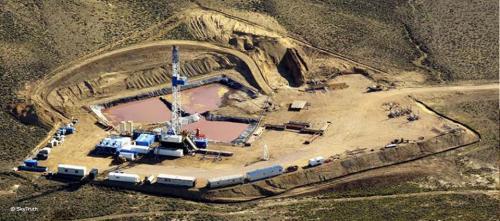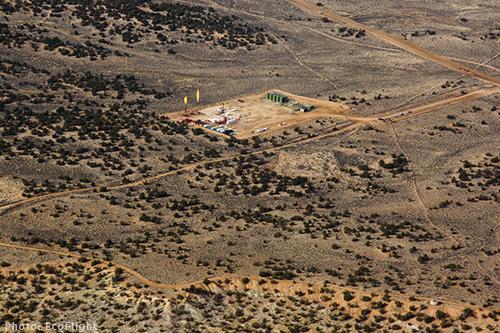Leasing on Public Lands

Drilling in Wyoming
SkyTruth
The federal government allows oil and gas development on many of our public lands.
But oil and gas drilling can damage wildlands, so it is important the government does all it can to decrease environmental harm when leasing our lands to oil and gas companies.
Water, air and habitats need to remain clean, and oil and gas drilling needs to be kept to the smallest possible footprint.
While the federal government has important policies in place to ensure that certain procedures occur, increased oversight is needed. Here is an overview of the current leasing process.
Five steps of oil and gas development on public lands
The process the Bureau of Land Management (BLM) uses to lease and oversee oil and gas development on public lands involves these five steps:
- Land use planning
- Parcel nominations and lease sales
- Well permitting and development
- Operations and production
- Plugging and reclamation

Land use planning
Through a process that includes opportunities for public comment, the BLM determines:
- Where oil and gas resources may be leased
- Areas where oil and gas development should not occur
- What to do when oil and gas leasing could harm other natural resources
Parcel nominations and lease sales
After the land use planning process, the BLM decides an area is available for oil and gas development. This land may be nominated for lease sales by oil and gas companies, which take place four times a year. The winning bidder has 10 years to develop the land, agrees to pay a 12.5 percent fee to the BLM for oil and gas taken from the land and agrees to comply with a variety of environmental and safety requirements.
Well permitting and development
Companies must get a permit from the BLM to begin drilling. This may require an environmental review, but no review is required if certain conditions are met. The BLM encourages operators to use “Best Management Practices” in operations on federal lands, but many of these practices are voluntary. The oil and gas company is also required to comply with various state requirements.
Operations and production
Periodic reviews and site visits are required to make sure oil and gas companies follow environmental rules and regulations. Companies that violate rules may face penalties, though a recent Congressional report has found that the BLM rarely imposes such fines.
Plugging and reclamation
Companies are generally required to ‘reclaim’ the area disturbed after all the oil or gas is extracted from a well. This means restoring the the natural vegetation, water supply and wildlife habitats.
